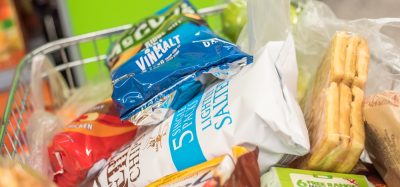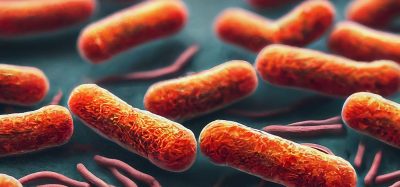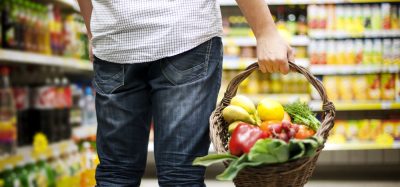Researchers utilising AI to support consumers in US food deserts
- Like
- Digg
- Del
- Tumblr
- VKontakte
- Buffer
- Love This
- Odnoklassniki
- Meneame
- Blogger
- Amazon
- Yahoo Mail
- Gmail
- AOL
- Newsvine
- HackerNews
- Evernote
- MySpace
- Mail.ru
- Viadeo
- Line
- Comments
- Yummly
- SMS
- Viber
- Telegram
- Subscribe
- Skype
- Facebook Messenger
- Kakao
- LiveJournal
- Yammer
- Edgar
- Fintel
- Mix
- Instapaper
- Copy Link
Posted: 7 August 2024 | Leah Hockley | No comments yet
University researchers across the US are working to develop a new AI-powered tool that will help businesses operating in food deserts to give more nutritious choices to consumers.


Vast swaths of the US, both urban and rural, are deemed “food deserts” due to their reduced access to a variety of healthy and inexpensive food. Often, people living in food deserts also experience higher poverty levels.
“In the US, we have a major issue regarding the inequitable distribution of resources that extends to our food supply,” said Tera Fazzino, Associate Professor of Psychology at the University of Kansas (KU). “There are communities all across the US that don’t have access to fresh, healthy food — sometimes referred to as food deserts. In these communities, they’re saturated with foods that are packaged, hyperpalatable and have very limited options for fresh, healthy and nutritious food that we need to live healthy and productive lives.”
In response, Fazzino, along with a multidisciplinary group of researchers across several institutions, will help to create a new digital tool powered by artificial intelligence (AI), called the NOURISH platform, to help businesses and startups operating in food deserts to give more nutritious choices to an estimated 24 million Americans. The work is supported by a $5 million grant from the National Science Foundation’s (NSF) Convergence Accelerator programme and the United States Department of Agriculture (USDA) and led by Laura Schmidt, Professor at the University of California-San Francisco.
“The overall project is designed with the goal of accelerating the growth of fresh food businesses in communities that have limited access to fresh food,” said Fazzino, who serves as a lead scientist on the NOURISH team. “We’re aiming to utilise some geospatial analyses and tools and artificial intelligence to facilitate this development, consolidate large volumes of information and help individuals from these communities connect all the pieces to launch or expand fresh food businesses in places that don’t have many.”
The multidisciplinary and institutional effort is based at the University of California-San Francisco and includes the University of California-San Diego, New York University (NYU) and the International Center for Food Ontology Operability Data and Semantics (IC-FOODS).
At KU, the research will center on food psychology and the food-environment realm — long-standing research interests of Fazzino, who also serves as Associate Director of the Cofrin Logan Center for Addiction Research & Treatment in KU’s Life Span Institute and has helped to define and study hyperpalatable foods.
“I’m working on collecting data sources and collaborating with our computer science team to gather information for what we’re calling an ‘opportunities map,’” she said. “This AI-enabled tool will suggest areas where one might want to open a business based on various metrics.”
Fazzino’s team at KU will also source data for a digital tool within the NOURISH platform to link entrepreneurs interested in starting new food businesses with local providers in their area — small farms and producers of fresh food — directly facilitating that link in the production side.
Datasets will be processed by the Supercomputer Center of UC San Diego to include government, private sector and crowdsourced information. The NOURISH platform will feature “dynamic, interactive maps of local food systems across the US accessible from a mobile phone in multiple languages,” according to the researchers. Further, patented recommendation algorithms will enable the NOURISH platform to customise business plans based on local consumer preferences for price, convenience and flavour.
In addition, Fazzino is heading up the nationwide training programme under the NOURISH programme to train “several generations” of scientists interested in sustainable food systems that promote equitable access to fresh and healthy food.
“We’re taking the stance that using AI and geospatial modeling combined with deep collaboration and community-based design can significantly improve equitable food access,” she said. “Part of this involves making people aware of why our food system is the way it is, understanding its origins and training them to develop skills in creating a sustainable food system for the long term. We focus on how advanced data science and analytical modeling can address these issues.”
The KU researcher’s approach includes ongoing collaborations with the USDA’s 4-H programme, an agricultural programme for youths, as well as working with a group that has been doing geospatial and food mapping work at the high school level in several states.
In 2024 and 2025, the NOURISH team will test the platform in lower-income areas within San Diego and Imperial counties in California, then plan to scale it nationally.
Related topics
Food Security, Health & Nutrition, Research & development, Technology & Innovation, The consumer
Related organisations
International Center for Food Ontology Operability Data and Semantics (IC-FOODS), National Science Foundation (NSF), New York University (NYU), United States Department of Agriculture (USDA), University of California San Diego, University of California San Francisco, University of Kansas (KU)









